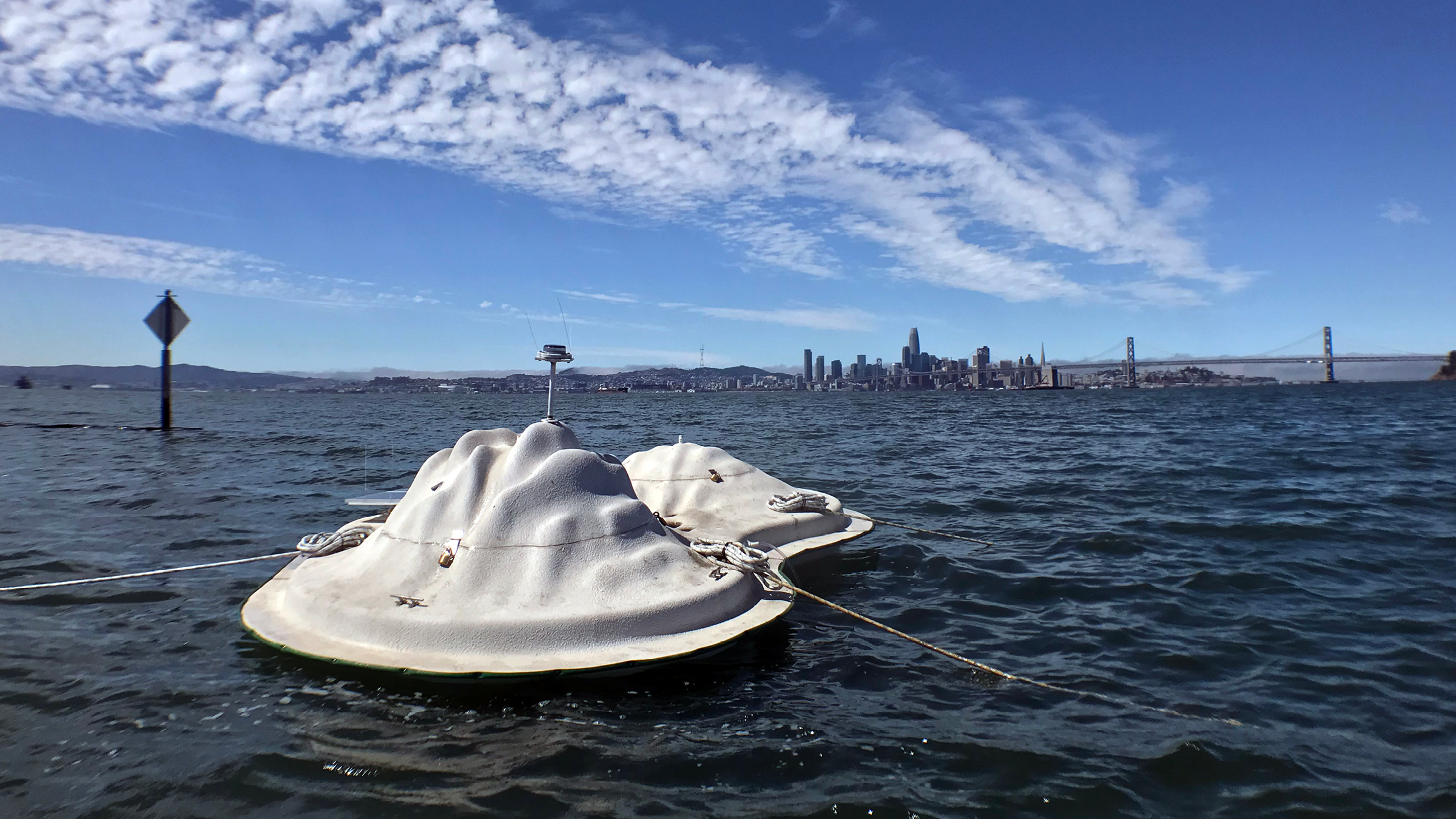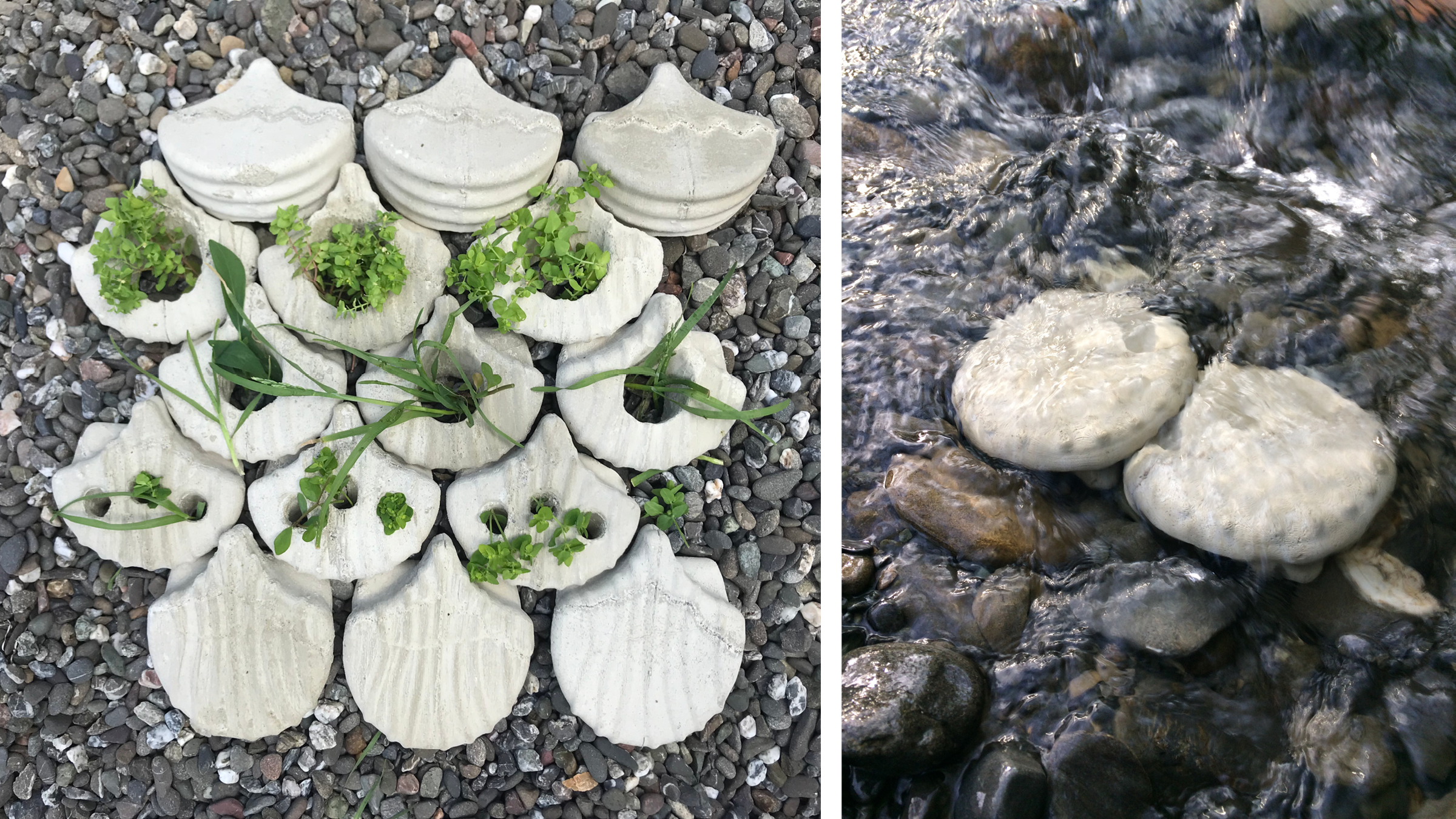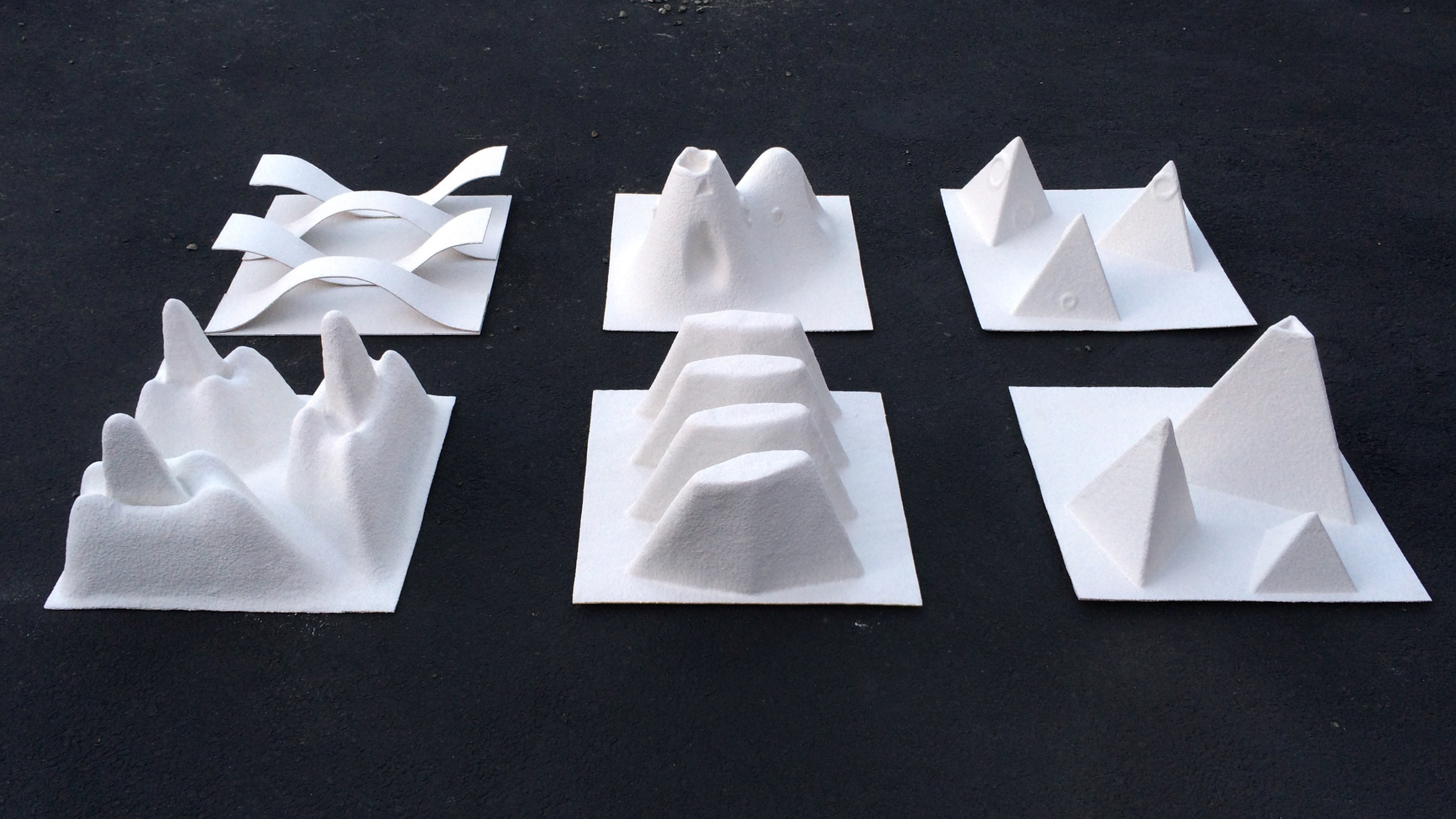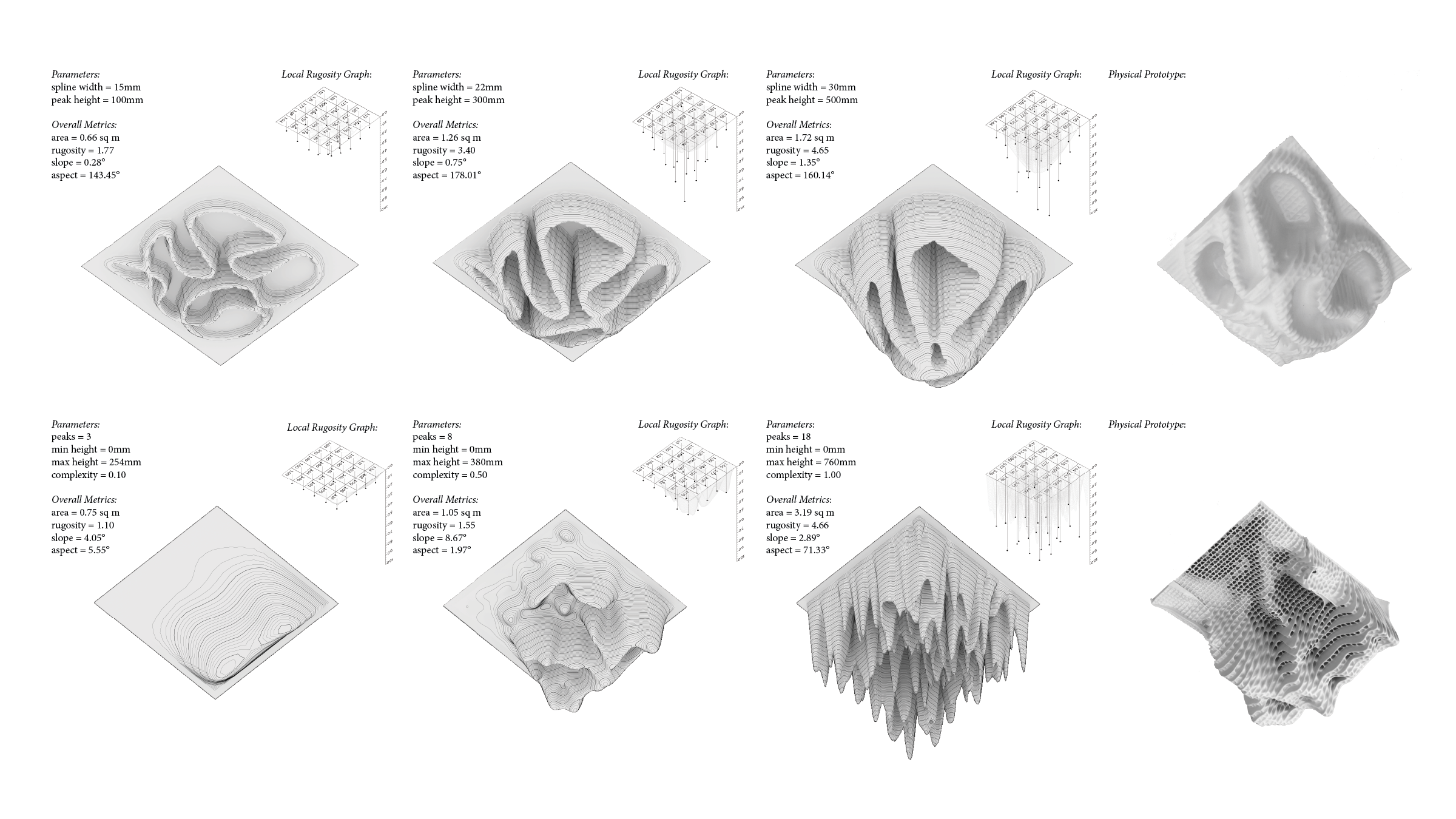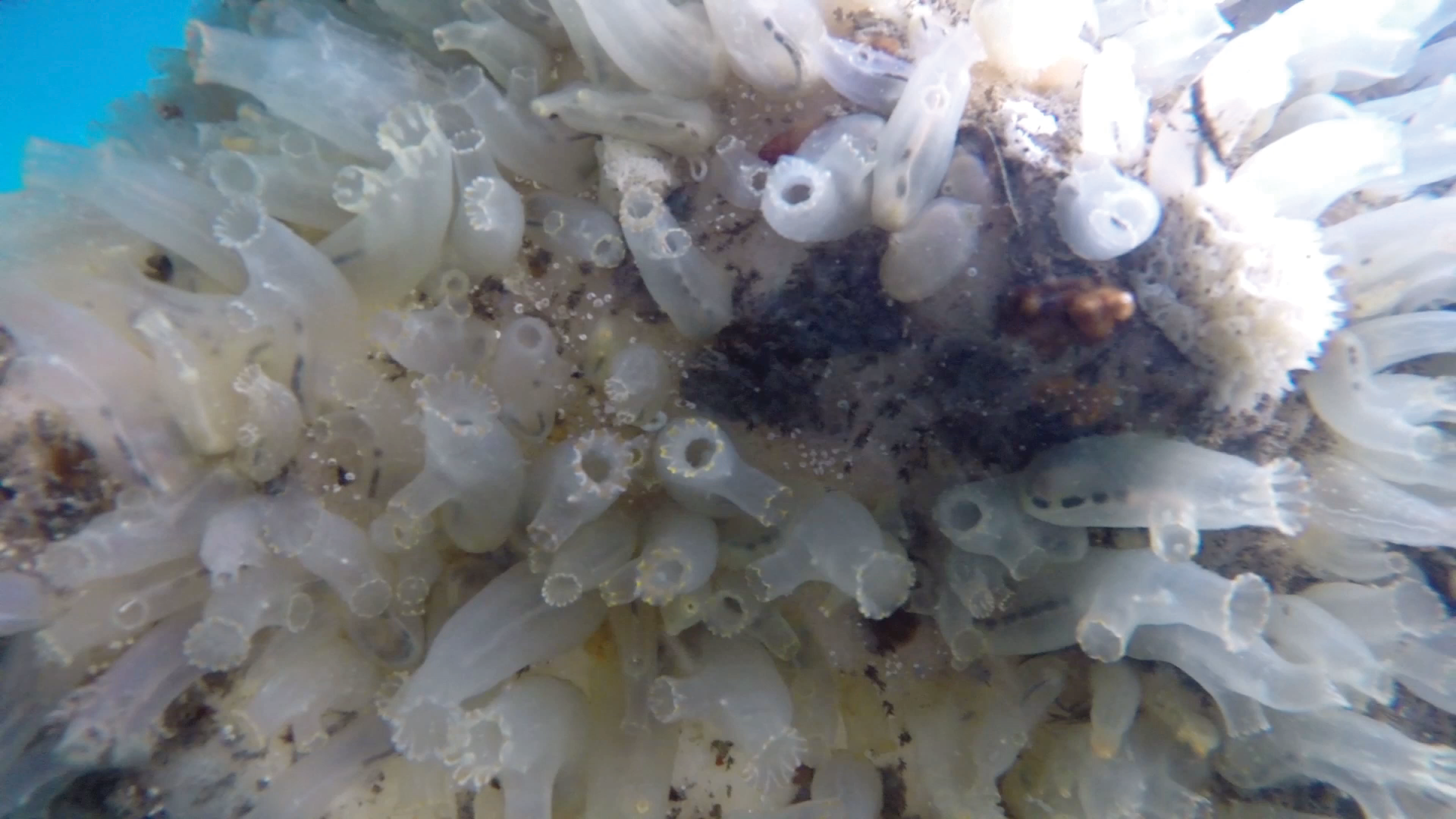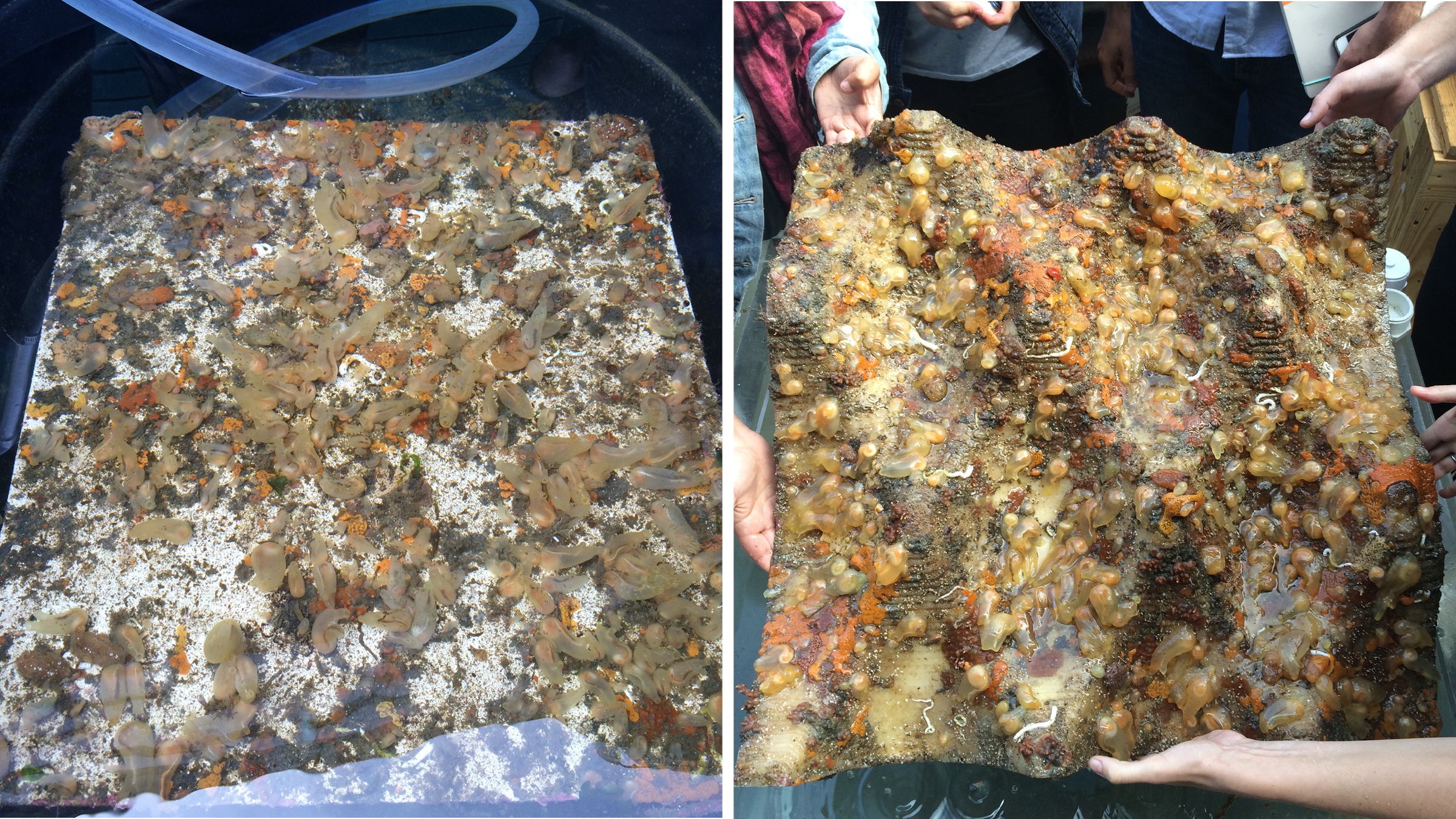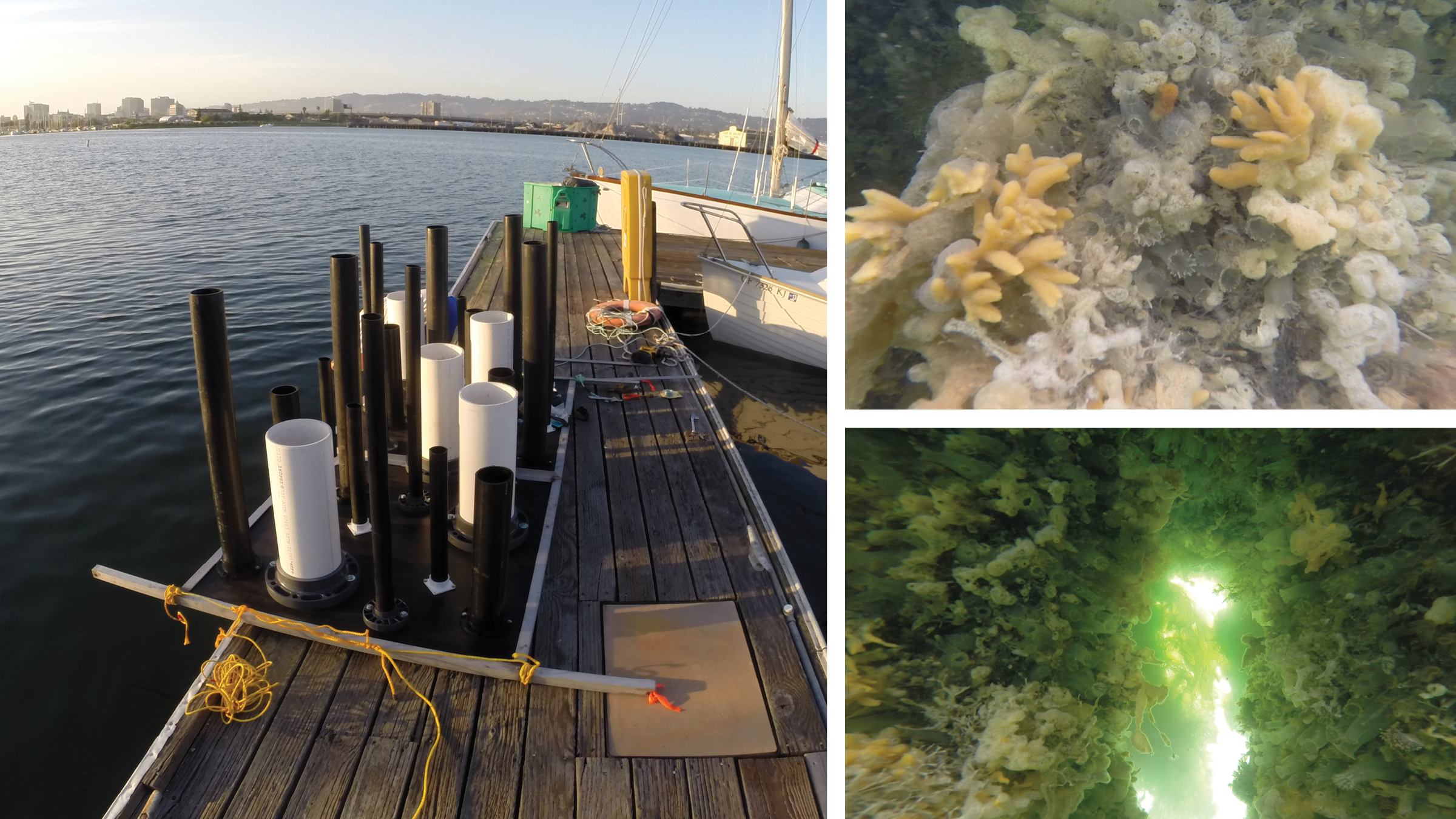Faculty Design Award, Association of Collegiate Schools of Architecture, 2020
Innovation Award, American Institute of Architects, 2019
Editor’s Choice, Architect’s Newspaper Best of Design Awards (Research), 2019
Impact Award, CCA Center for Impact, 2019
Columbia University GSAPP Incubator Prize, 2019
Architect Magazine R+D Award, 2018
Exhibited at Designing Material Innovation exhibition, 2017
Selected for Catalyst Program, Buckminster Fuller Institute, 2017
Project Leaders: Adam Marcus, Margaret Ikeda, Evan Jones
The Buoyant Ecologies Float Lab is a prototype for a new kind of resilient coastal infrastructure. It merges expertise from design, advanced digital fabrication manufacturers, and marine ecologists to imagine a floating architecture of the future that can exist productively with its surrounding environment.
This prototype, which builds upon five years of applied research at California College of the Arts, consists of a floating breakwater structure that incorporates an innovative, ecologically optimized fiber-reinforced polymer composite substrate with variable topographies that perform both above and below the water. On the top, the topography is engineered to channel rainwater and produce watershed pools for intertidal or terrestrial habitats. Underwater, the hull’s peaks and valleys vary in size to provide habitats for different types of invertebrates. Water flowing along this underwater landscape brings plankton and other nutrients into these “fish apartments,” helping to promote ecological diversity. In large masses, this biological growth can help attenuate wave action and reduce coastal erosion, one of the primary impacts of climate change and sea level rise. The vessel includes attachment fittings on the underside to suspend future prototypes and further develop the wave attenuation potential of the optimized substrate.
The prototype was deployed in San Francisco Bay in August 2019. It is currently moored in the Port of Oakland’s Middle Harbor Shoreline Park, where it serves as a floating research platform for developing ecologically optimized substrates for wave attenuation. It also serves as an environmental demonstration project and interfaces with public education and community engagement efforts sponsored by the Port of the Oakland.
See also:
Optimized Ecological Substrate research
Buoyant Ecologies San Francisco studio
Buoyant Ecologies Oakland studio
Buoyant Ecologies Maldives studio
Press Coverage:
Dezeen
Hyperallergic
Undark
Smithsonian Magazine
Fast Company
Architect Magazine
Redshift
Architect’s Newspaper
Business Insider
Project Credits:
Project Leaders: Adam Marcus, Margaret Ikeda, Evan Jones
Design Team: Taylor Metcalf, Georine Pierre, Jared Clifton
Marine Ecology: Benthic Lab, Moss Landing Marine Laboratories — John Oliver, Kamille Hammerstrom, Daniel Gossard
Fabrication: Kreysler & Associates — Bill Kreysler, Josh Zabel
Maintenance and Deployment Consultant: Ted Buhl
Naval Architecture & Engineering: Tri-Coastal Marine — Andrew Davis
Deployment Team, CCA: Piper Alldredge, Vishnu Balunsat, Joshua Eufinger, Viviani Isnata, Mithila Jagtap, Cassady Kenney, Cristian Laurent, Pete Pham
Deployment Team, Port of Oakland: Bill Morrison, Donald Ockrassa, Kevin Nekimken, Sean Wheels, Greg Skeen
Administrative Support: Dustin Smith, Amanda Schwerin, Karina O’Neill, Laura Ng, Sarah Lowe, JD Beltran, Wes Miller, Tracy Tanner
Project Sponsors: Miranda Leonard, Kreysler & Associates, Ashland Reactive Polymers, Autodesk Workshop at Pier 9, Port of Oakland, CCA Center for Impact
Photography: Architectural Ecologies Lab, Mike Campos (aerial photos)




























